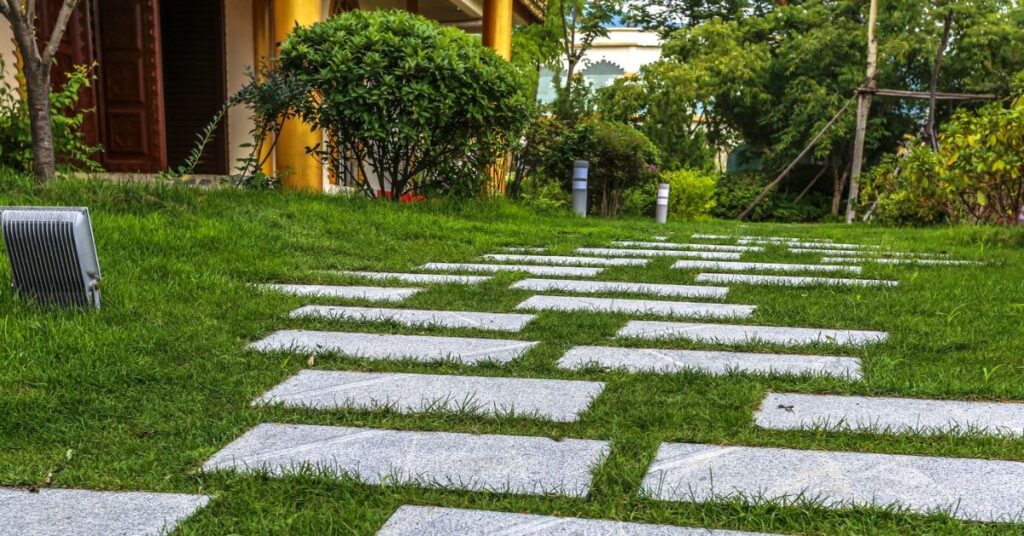Building or upgrading a backyard patio is one of the most rewarding home improvements. A patio adds usable outdoor space, boosts your home’s value, and creates the perfect setting for gatherings, meals, and relaxation. But the big decision comes down to this: Should you choose a cement patio or a paver patio?
Many homeowners reach out to cement patio contractors with a clear idea, only to discover there’s more to consider. While both cement and pavers offer unique benefits, the best choice depends on your budget, design preferences, climate, and how much maintenance you’re comfortable with.
How is a cement patio built?
A cement patio is typically made using poured concrete. Contractors mix cement, sand, gravel, and water to create a blend that is poured into a framed area of your backyard. Once leveled, the surface is left to cure and harden over several days. The result is a strong, smooth, and continuous patio surface.
Why homeowners consider cement patios
Cement patios offer a number of advantages that appeal to practical homeowners. First, they are strong and durable. A well-installed concrete patio can last over two decades without major issues. Second, cement patios are low-maintenance. Aside from occasional cleaning or sealing, they require very little effort.
What Are Paver Patios?
How are paver patios built?
Paver patios are made using individual bricks or stone-like blocks arranged in a pattern. These pavers are placed over a compacted base of gravel and sand. The installation process is done one piece at a time, which makes it more labor-intensive but allows for greater design flexibility.
Why do many choose paver patios?
Paver patios are ideal for those who prioritize design and visual appeal. Because they come in different shapes, colors, and textures, pavers offer a high level of customization. Homeowners can choose from various patterns such as herringbone, basket weave, or random stone layouts.
Insights from Cement Patio Contractors
Why contractors often recommend cement patios
Cement patio contractors usually suggest concrete for projects that require a strong, long-lasting foundation with minimal maintenance. Many clients ask for something that is both budget-friendly and reliable, and cement checks those boxes.
Another reason contractors favor cement is that it can be completed faster than paver patios. Some contractors offer advanced options like colored concrete or stamped patterns, which elevate the final look while keeping costs low.
When contractors suggest going with pavers instead
Despite their expertise in cement, many contractors also install paver patios and will recommend them when the situation fits. For example, in a backyard with uneven ground or multiple slope angles, pavers may offer better adaptability.
Cement vs. Paver Patios: Side-by-Side Comparison
Cost comparison
Cement patios are more affordable to install. The average cost per square foot ranges from six to ten dollars. For a 300-square-foot area, that totals between eighteen hundred and three thousand dollars.
Paver patios cost more due to the labor-intensive installation. A 300-square-foot paver patio can run anywhere from three thousand to seventy-five hundred dollars, depending on the design complexity and material used.
Installation time
Cement patios are quicker to install. In most cases, a concrete patio can be finished within two to three days. Paver patios take longer. Installation usually spans four to seven days. Each paver must be laid and adjusted by hand, which takes time.
Durability and lifespan
Cement patios can last between twenty-five and thirty years when maintained well. They hold up under heavy use but may crack over time, especially in regions with freezing temperatures.
Paver patios are known to last even longer, with lifespans reaching thirty to fifty years. Because the surface is made of individual units, it handles shifting ground and freeze-thaw cycles better.
Maintenance and care
Cement patios require occasional power washing to keep them clean. Sealing the surface every few years can help prevent staining and surface wear.
Paver patios need more frequent attention. Weed growth between the joints can be a concern unless polymeric sand or a joint stabilizer is used.
Factors That Help You Choose
Choose cement patios if:
You are looking for a clean, modern surface that blends well with your home’s architecture. Cement patios are perfect if you want something fast and budget-conscious.
Choose paver patios if:
You enjoy customizing the look of your space and want something visually unique. Pavers are great for sloped yards or areas prone to ground shifting. If you want to create patterns, borders, or incorporate multiple colors, a paver patio is a better fit.
Conclusion
At the end of the day, choosing between a cement and paver patio comes down to your priorities. If your focus is on cost, low upkeep, and a modern look, cement patios are a solid option. If you value style, long-term durability, and flexibility in design, pavers may better suit your needs.
FAQs
How long does a cement patio need to cure before use?
Cement patios typically need about twenty-four to forty-eight hours before you can walk on them. Full curing takes up to twenty-eight days, especially before placing heavy furniture or grills.
Can I use pavers on sloped ground?
Yes, pavers are often used on sloped or uneven ground. Contractors can adjust the base during installation to ensure a level and stable surface.
Are paver patios harder to maintain than cement?
Paver patios require more frequent maintenance like refilling joint sand and controlling weed growth. However, they are easier to repair since individual stones can be replaced.
Do cement patios always crack over time?
While small cracks are common in cement patios, proper installation, good drainage, and sealing can reduce the risk. In many cases, the cracks are cosmetic and don’t affect the structure.







